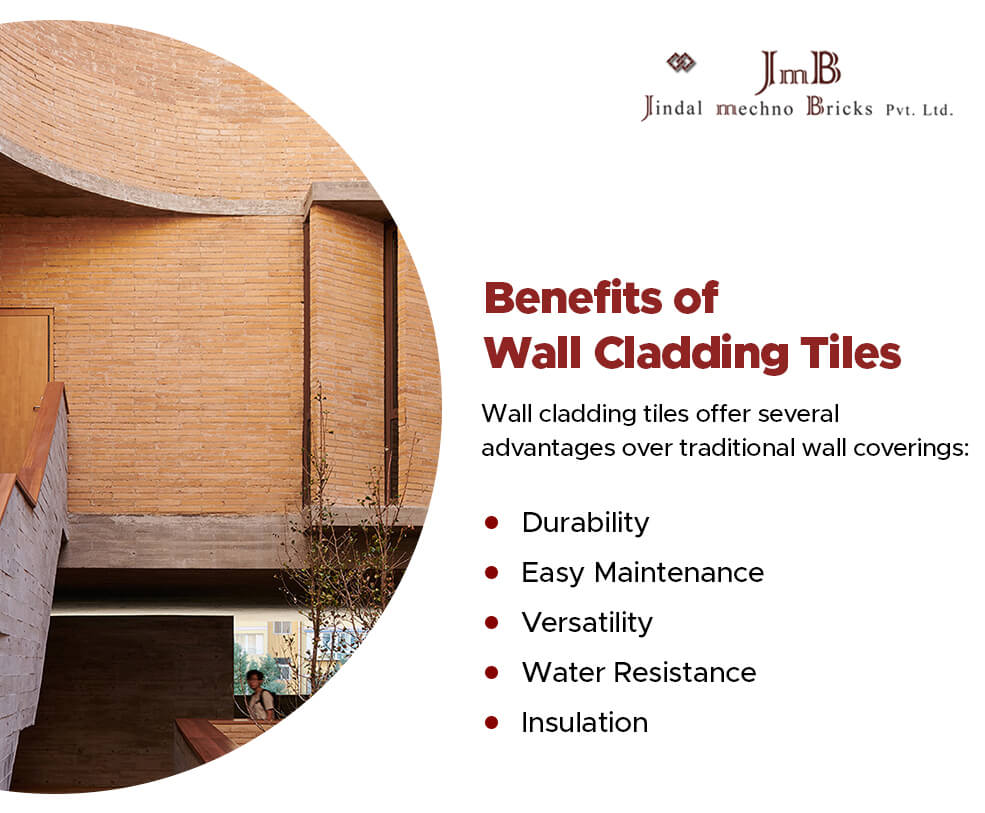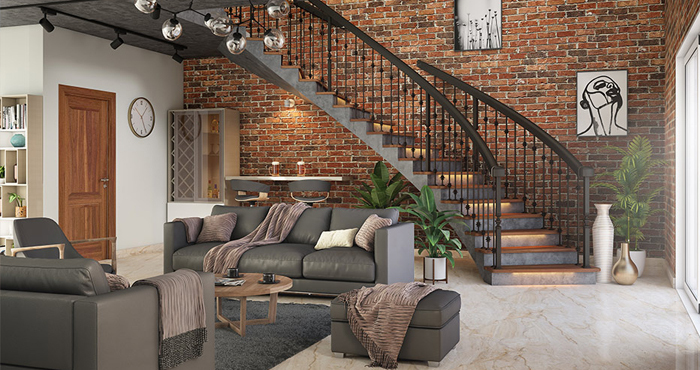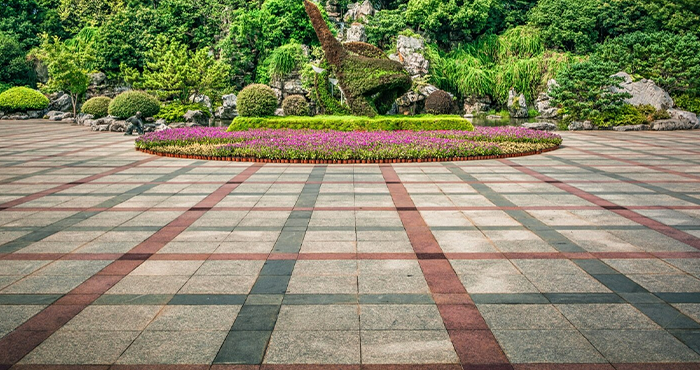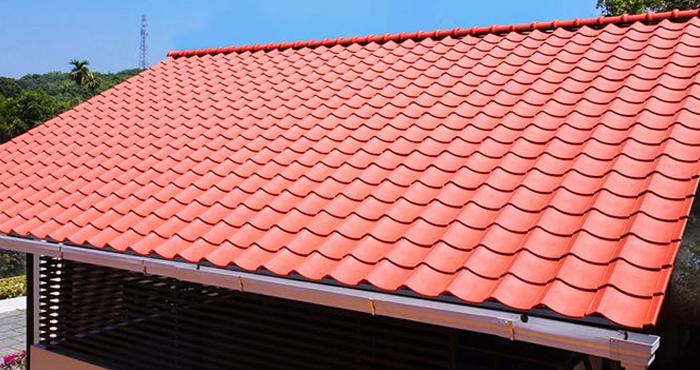If you are searching for a smart method for renovating the interior of your home, you can use brick tiles or brick impact tiles to give an amazing to your inside walls. Brick tiles for interior walls are reasonable and versatile to work with. Yet, you can apply them DIY and use them to make an assortment of extraordinary elements inside your home.
Brick tiles, also called wall cladding tiles, have become extremely famous, and this is essential because of the way they come in such a wide variety of tones and looks, offering you plenty of choices. They are lightweight and easy to work with, allowing you to accomplish a similar brick-like wall inside your home as you have outside. In this blog, let’s know everything about wall cladding tiles, their benefits, and more.
What is Wall Cladding?
Wall cladding refers to the process of covering or overlaying an existing wall with a decorative or protective material. This technique is commonly used to enhance the appearance, durability, and insulation of walls in both residential and commercial spaces. Wall cladding tiles are a popular choice for this purpose, offering a wide range of styles, colors, and textures to suit different design preferences.
Types of Wall Cladding Tiles
There are several types of wall cladding tiles available in the market, each with its unique characteristics and advantages. Here are some of the most common options:
- Ceramic Tiles: These are classic and versatile tiles made from clay and other natural materials. They come in a variety of colors, patterns, and finishes, making them suitable for various interior design styles.
- Porcelain Tiles: Known for their durability and low porosity, porcelain tiles are resistant to moisture, stains, and scratches. They are an excellent choice for high-traffic areas and bathrooms.
- Natural Stone Tiles: These tiles are made from natural materials like slate, marble, granite, and travertine. They offer a luxurious and timeless look, adding warmth and character to any space.
- Glass Tiles: Available in a range of colors and finishes, glass tiles can create a modern and sleek aesthetic. They are easy to clean and maintain, making them a popular choice for kitchen backsplashes and bathroom walls.
- Mosaic Tiles: Consisting of small, individual tiles arranged in a pattern, mosaic tiles add texture and visual interest to walls. They can be made from various materials, including glass, ceramic, and natural stone.
Benefits of Wall Cladding Tiles
Wall cladding tiles offer several advantages over traditional wall coverings:

- Durability: Tiles are highly resistant to wear and tear, making them a long-lasting solution for walls. They can withstand moisture, heat, and everyday use without fading or deteriorating.
- Easy Maintenance: Most wall cladding tiles are easy to clean and maintain. A simple wipe with a damp cloth is often all that’s needed to keep them looking fresh and new.
- Versatility: Tiles come in a wide variety of colors, patterns, and textures, allowing you to create unique and personalized designs for your walls. They can complement any interior style, from modern to rustic.
- Water Resistance: Many types of wall cladding tiles are water-resistant, making them ideal for bathrooms, kitchens, and other areas prone to moisture.
- Insulation: Some tile materials, such as natural stone, offer excellent insulation properties, helping to regulate indoor temperatures and reduce energy costs.
Installation and Maintenance
Installing wall cladding tiles requires careful preparation and proper techniques to ensure a successful and long-lasting result. Here are some key points to consider:
- Surface Preparation: The wall surface must be clean, dry, and free of any debris or loose material. Proper surface preparation is crucial for successful tile adhesion.
- Tile Layout: Plan the tile layout in advance, considering factors like tile patterns, grout lines, and any obstacles or fixtures in the way.
- Adhesive and Grout: Use high-quality adhesive and grout specifically designed for wall cladding tiles. Follow the manufacturer’s instructions for proper application and curing times.
- Sealing: After installation, it is recommended that the tiles be sealed to protect them from stains, moisture, and other potential damages. Various sealants are available, depending on the tile material and intended use.
- Cleaning and Maintenance: Regular cleaning with mild detergents and a soft cloth or mop will help maintain the tiles’ appearance. Avoid using abrasive cleaners or harsh chemicals, as they may damage the tile surface.
Conclusion
Wall cladding tiles offer a beautiful and practical solution for enhancing the look and durability of your walls. With a wide range of materials, colors, and textures to choose from, you can create a unique and personalized design that suits your style and needs. Proper installation and maintenance are key to ensuring your wall cladding tiles’ longevity and continued beauty.
So, if you are looking for high-quality bricks, Jindal Mechno Bricks has got you covered. We are the leading manufacturer of machine-made bricks, unglazed ceramic cladding tiles, brick pavers & hollow blocks. Visit today to know more.
FAQs
Can I install wall cladding tiles myself?
Yes, in many cases, wall cladding tiles can be installed as a DIY project if you have the right tools and are willing to put in the work. However, it’s important to prepare the wall surface properly, follow the manufacturer’s instructions carefully, and take the necessary precautions to ensure a successful installation.
How do I clean and maintain wall cladding tiles?
Proper cleaning and maintenance are essential to keep your wall-cladding tiles looking their best. For most tiles, regular cleaning with a mild detergent and a soft cloth or mop is sufficient. Avoid using harsh chemicals or abrasive cleaners, as these can damage the tile surface. Depending on the tile material, you may also need to apply a sealant periodically to protect against stains and moisture.
Are wall cladding tiles suitable for outdoor use?
Some types of wall cladding tiles, such as porcelain and natural stone, can be used for outdoor applications like cladding exterior walls or creating outdoor living spaces. However, it’s important to choose tiles specifically designed for outdoor use, as they need to be able to withstand weather conditions like rain, snow, and temperature fluctuations. Indoor tiles may not be durable enough for outdoor environments.
Can wall cladding tiles be used in wet areas like showers and pools?
Yes, many types of wall cladding tiles, such as ceramic, porcelain, and certain natural stone tiles, are suitable for use in wet areas like showers, steam rooms, and around pools. These tiles are water-resistant and can withstand moisture better than other wall coverings. However, it’s crucial to use the appropriate waterproof adhesives and grouts, as well as properly seal the tiles to prevent water damage over time.





